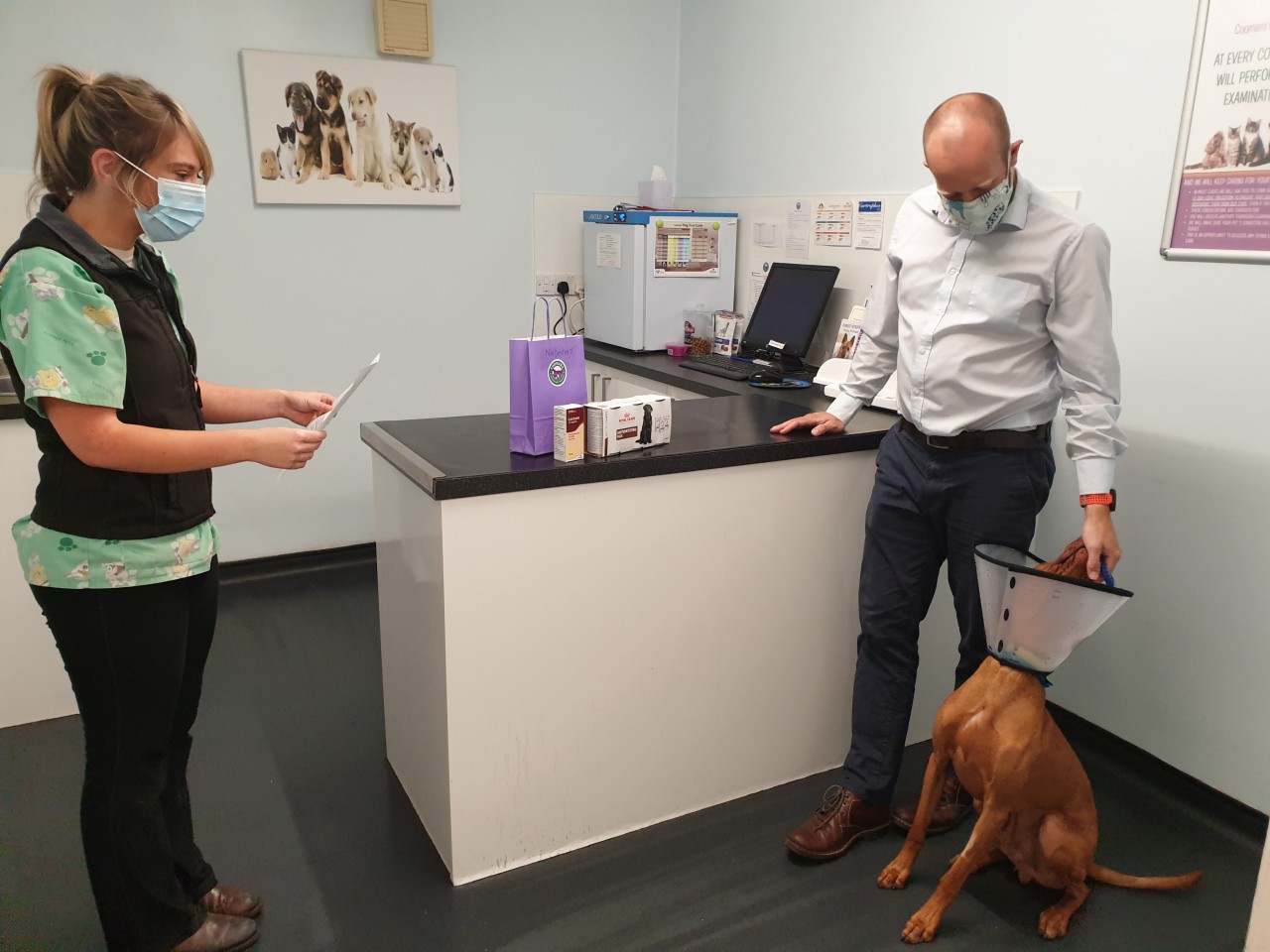Beyond The Double Doors - What Your Pet Can Expect From A Day At The Vets
It can be a nerve-wracking experience leaving your beloved pet with us for the day for investigations or a surgical procedure. In this article we hope to allay your fears by showing you exactly what you and your pet can expect, and what happens "out back" at Coomara. Nile underwent a routine castration, and here is his story:
4. Your pet will usually receive a "pre-med" - a sedative injection - about 30-45 minutes before their procedure. This helps them to relax, reducing stress at the time of induction, and also reduces the doses of anaesthetic drugs we will give later. The pre-med will also help your pet to wake up smoothly from their anaesthetic.
7. While the Vet "scrubs up" for theatre the Nurse prepares your pet - the operation site is clipped to remove all hair, and cleaned with surgical scrub solution. This will help prevent infection. This photo shows the variety of ways that we stop your pet from losing too much body heat while asleep - blankets, socks and a Bair Hugger (special cushion filled with temperature controlled hot air)
10. Your pet is carefully monitored on recovery until they are up and about. A bag is prepared containing their post-op instructions, medications and recovery diet. They may also be fitted with an Elizabethan collar to prevent them from interfering with their stitches. Fitting it in the wards means they have a chance to get used to it before coming home.
2. Your pet will receive a full physical examination to ensure they are well enough for their anaesthetic. We may perform a pre-op blood test at this stage. This will have been discussed with you at your admission appointment. It is also a chance for the Vet to plan your pet's procedure more thoroughly e.g. checking the size and position of a lump, or planning which x-rays to take of a lame leg.
5. "Induction" is the name given to when we administer the general anaesthetic drugs to your pet. We clip and clean an area on their front leg, and place an IV catheter in their vein. Through this catheter we give the general anaesthetic drug slowly and to effect. The nurse supports your pet throughout.
11. Our nurses are committed to ensuring you are kept informed throughout your pet's stay. They will discuss this with you during the admission appointment. We will arrange a mutually convenient time for a discharge appointment, where the nurse or vet will discuss your pet's ongoing care and make arrangements for post-op check appointments.
3. We are pleased to have separate dog and cat wards, so that stress is kept to a minimum. Similarly, no kennels face one another. Your pet will be given accommodation according to their needs. We encourage you to bring in something from home like a jumper or blanket - the familiar smell can help put them at ease.
Comments
No comments made yet. Be the first to submit a comment
By accepting you will be accessing a service provided by a third-party external to https://www.coomara.co.uk/












